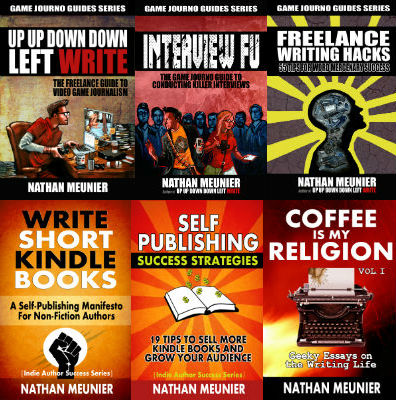How to De-Hype Your Content

Case Study: Carol Tice Finishes Strong with ‘Start Here’

Case Study: Nathan Meunier Profits With Low Budget Kindle Publishing
Content is designed to do one thing: Sell products and services. Sure, it may advance other goals throughout the sales process — lead and traffic generation, increase subscriber conversion rates, or prepare your audience for the sales pitch — however, it ultimately boils down to driving the traffic into your sales funnel through various channels.
Each channel has a purpose (and a personality!). In other words, don’t try to the same tricks on Twitter you use on Facebook. That bird just won’t fly.
The best content strategy involves a plan and a calendar. You should at the very least know who is producing which piece of content, what that content is going to be about, who the target audience is for that content, and where you intend to post it. But you should do one other thing, as well. Kill the hype.
Why Readers Don’t Like Hype
What sets great content apart from the pack isn’t how well you hype the product, how pretty your smile is, how brilliant your writing is, or how big your vocabulary is. Rather, great content gets to the point quickly and makes a powerful punch.
Infomercials are designed to get you excited about a product by appealing to your emotions to such a degree that you forget, or conveniently ignore, that what you’re hearing has no basis in fact. It’s just pure, raw emotional triggering.
Of course, I’m not knocking emotional triggers. All sales pitches do that to some degree. The difference between hype and an honest sales pitch is that the hype often doesn’t give you much more than the emotional drawstring. The sales pitch gets to the emotional trigger by focusing on the benefits of the product or service. See the nuance?
Undoubtedly, some people will be taken in by the hype. That’s why those infomercials are still on TV. They work on some people. But they don’t work on everyone.
Online shoppers tend not to fall for the hype. If a person is searching for information on a topic, then that means they intend to employ some level of critical thinking on the purchase. They have certain criteria in mind or they have a specific problem they want to solve. They’re going to judge your product or service based on whether or not it promises to fill their need. If you focus on hype and don’t provide any substance, they’re out of there.
Even YouTube Viewers Want Substance
 You might think that people watching YouTube videos will fall for the hype. Nope, not true. Even they want something more than “buy this and you’ll be cool” as illustrated by this brilliant post on YouTube video marketing.
You might think that people watching YouTube videos will fall for the hype. Nope, not true. Even they want something more than “buy this and you’ll be cool” as illustrated by this brilliant post on YouTube video marketing.
What sets great content apart from the pack isn’t how well you hype the product, how pretty your smile is, how brilliant your writing is, or how big your vocabulary is. Rather, great content gets to the point quickly and makes a powerful punch. No hype, all substance.
If you’re blogging, you should provide your audience with actionable information that they can take away and put to use. If you’re sharing a message on Facebook, your goal may be engagement. Perhaps your goal with a tweet is to get people to click a link and visit your landing page. If so, you’re much more likely to do that with a substantive call to action than a hyped up “click this link” message.
So the million dollar question is this, How do you slice the hype and add the substance?
The Low-Down On Killing The Hype In Your Message
Does this content achieve my stated goal?
Think of a football game. The winning team is the one with the best execution of a solid plan on the field. That means every player must play his position to the best of his ability in support of the team’s ultimate goal. The team that does that best wins the game.
Whether you are writing a tweet, a Facebook post, writing a YouTube video script, penning the ultimate blog post, or writing content for your next web page, before you do anything else, establish the goal of that content. The goal defines the game plan. Ask yourself after you have written the content, “Does this content achieve my stated goal?” Compare it to the original goal and ask if your intended audience will feel compelled to take the course of action you want them to take. If not, rewrite the content until you can answer in the affirmative.
Your job as a content producer is to hack and slash. Hack what doesn’t belong; slash what doesn’t contribute to the end goal. There’s your hype, falling off the slab of meat like a pound of fat.
 Are you ready to boost your authority? Looking for ways to expand your reach and deliver the best content for your niche audience? Download my free report, “14 Types of Authority Content.” Learn the 14 types of content that will keep your audience coming back for more and instantly make you an authority they can rely on.
Are you ready to boost your authority? Looking for ways to expand your reach and deliver the best content for your niche audience? Download my free report, “14 Types of Authority Content.” Learn the 14 types of content that will keep your audience coming back for more and instantly make you an authority they can rely on.


